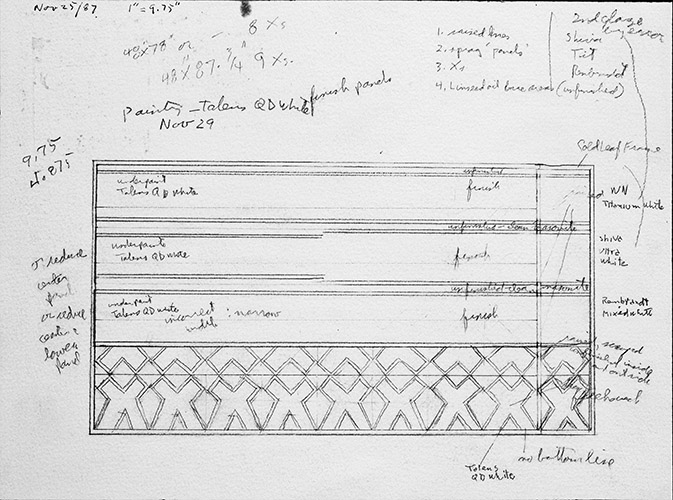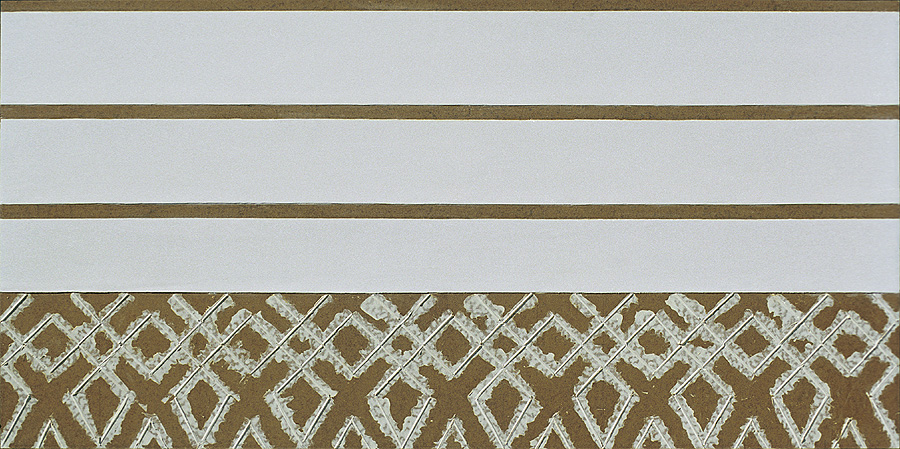↑ ↓ ↑ ↓
 |
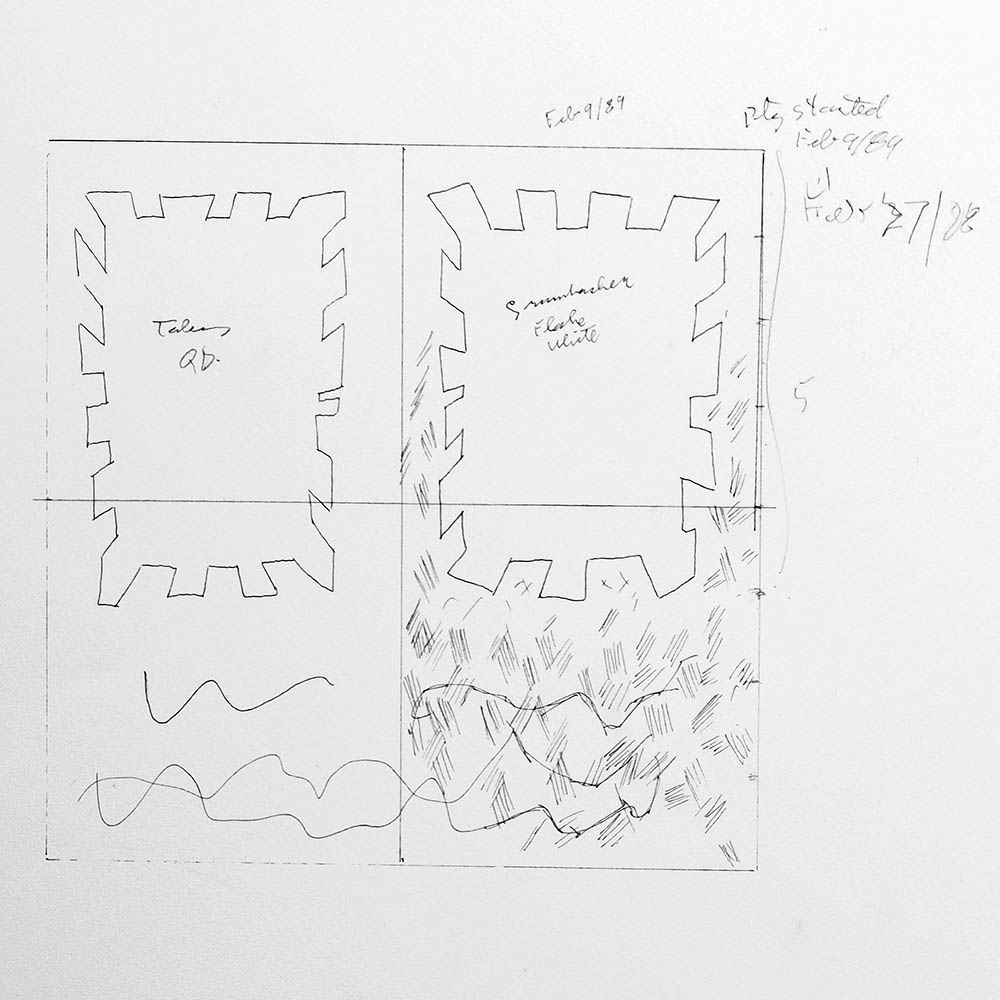 |
Starting around 1988 Bloore's preconceived figures started to appear in their own spaces rendered illusionistically. The actual frame of the painting became an apparent frame of a view into another world. This was radically new for Bloore, but very old as far as painting is concerned. It was a compositional shift from the iconic to the surrealistic.
↑ ↓ ↑ ↓
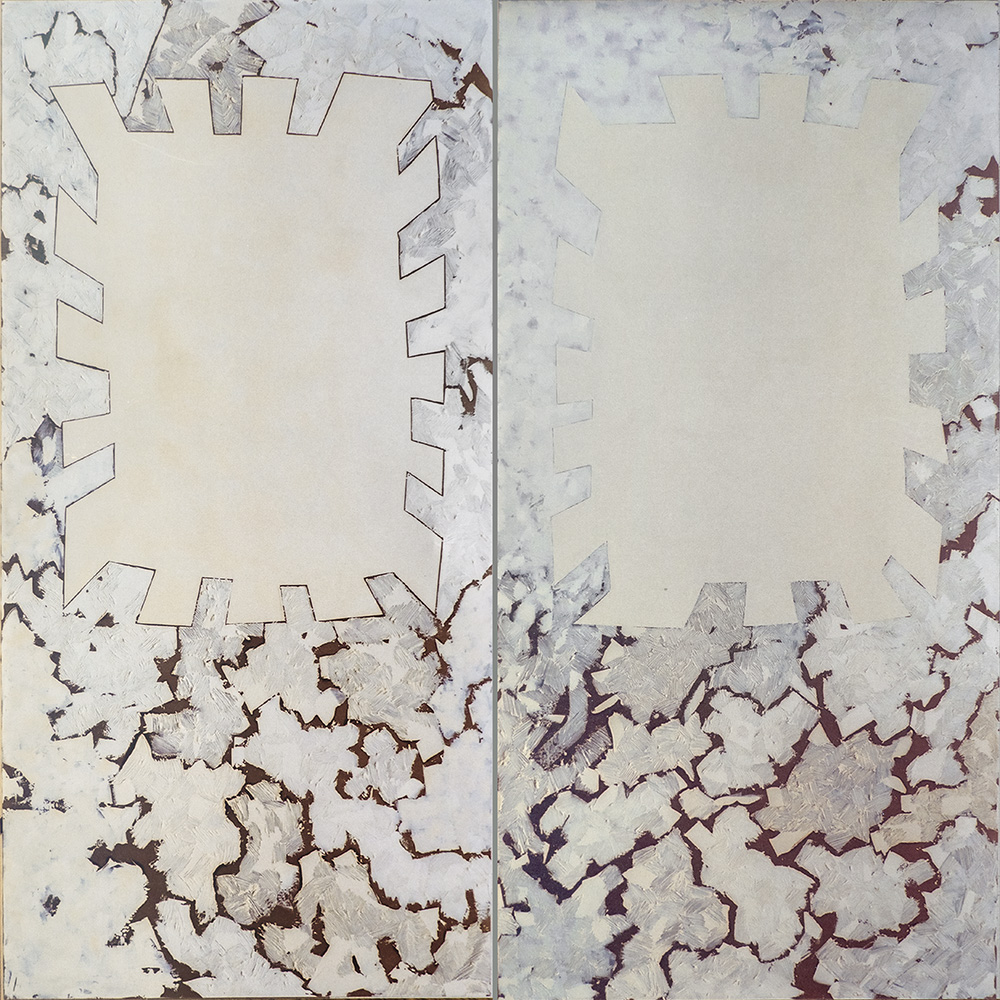
2-Panel Diptych Number 13, 1989 February 9-27, 2x 244x122cm, oil on masonite
Doing the large 2-Panel Series of 1988-90 he developed a method of almost mechanically generating compositions. He determined his frame in advance: a particular proportion at a preconceived scale. The drawing work was then about confining his ideas inside this window. He would scribble randomly all over his square with a pencil in his left hand and then erase with his right hand everything that did not look interesting.
↑ ↓ ↑ ↓

1989, Sketching at 265 Adelaide in front of 2-Panel Series Number 12
Then he would do this again, and again, many times. He would isolate and emphasize the most interesting relationships that would develop out of the squiggles and try to end most days with something that just might fly. Only the cold light of the next day and the fresh eyes of morning would tell. At the point the vision cohered he would always note down how many days of struggle had gone into that image, sometimes more than it required to execute it.
↑ ↓ ↑ ↓
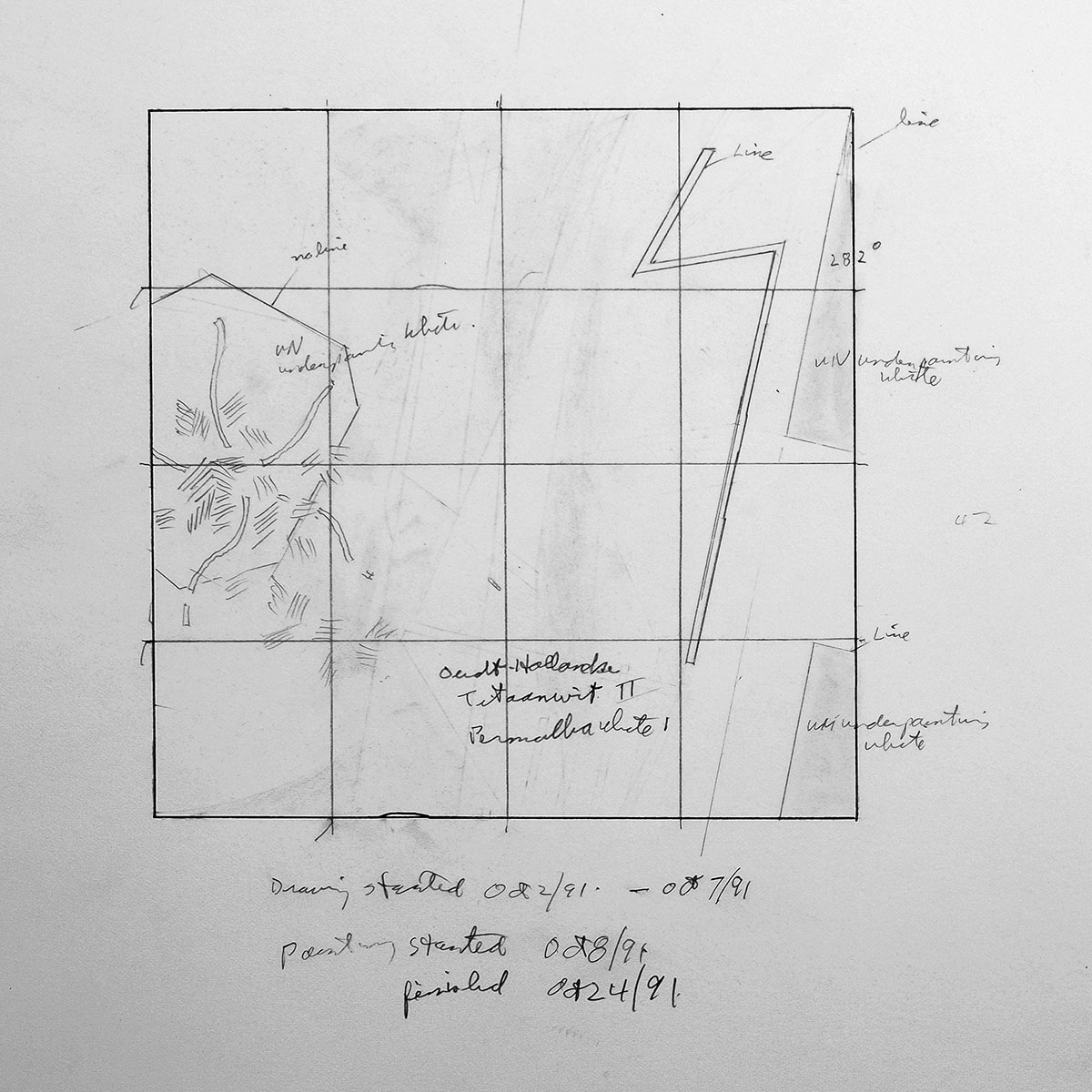 Drawn Oct. 2-7, Painted Oct. 8-24 |
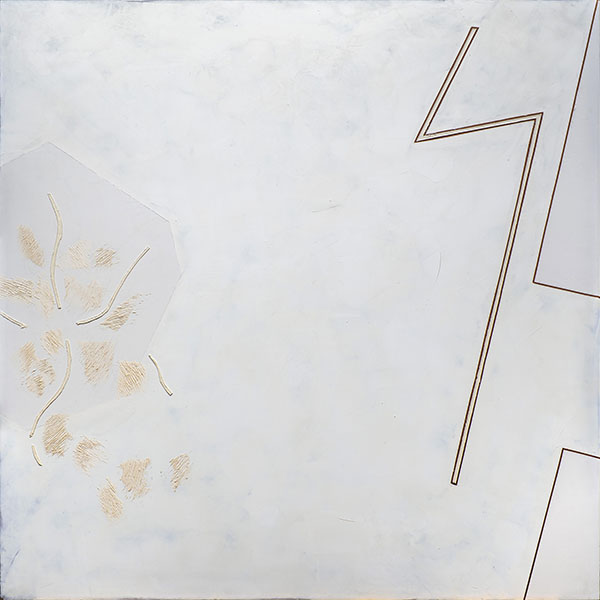 1991 No. 8, 122x122cm, oil on masonite |
Now the page would be cleaned up, usually with a battery powered eraser, gridded over with a mechanical pencil and the composition would be transferred with conté to the masonite panel for painting. As the piece was then painted the working drawing would be used to keep notes on novel methods of execution, paint selection, techniques, layering, etc. and Bloore would use these notes for subsequent works.
↑ ↓ ↑ ↓
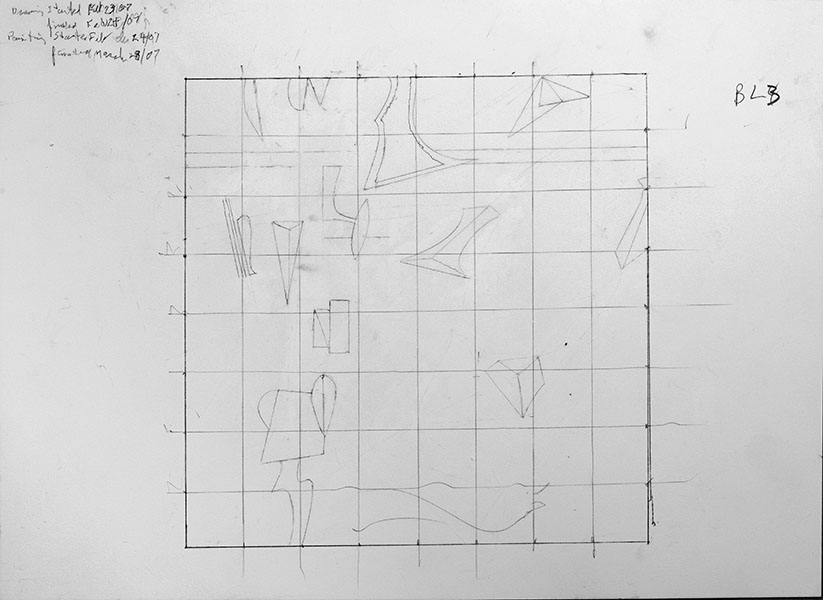
2007 Black Line Series No. 3, 122x122cm |
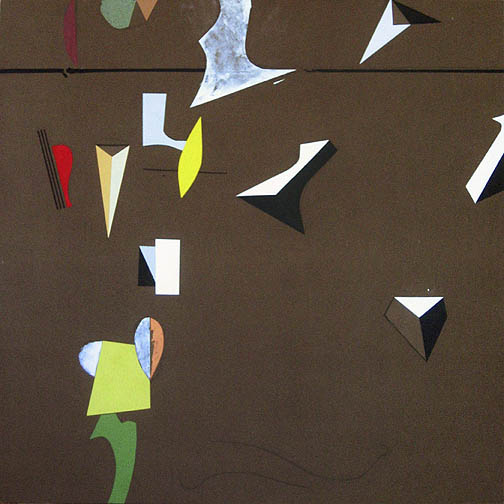
MacKenzie Art Gallery, Regina |
These records are an extremely valuable resource as they are crucial for restoration work and other repairs. They have been photographed, digitized and backed-up and placed for safe keeping while available for research purposes at:
The Bloore Archives
at the University of Regina
https://library.uregina.ca/research/archives
